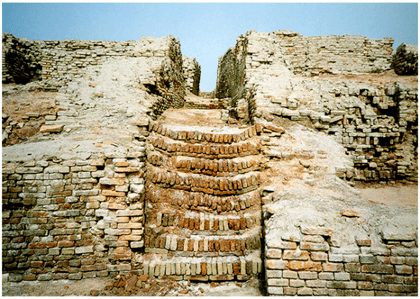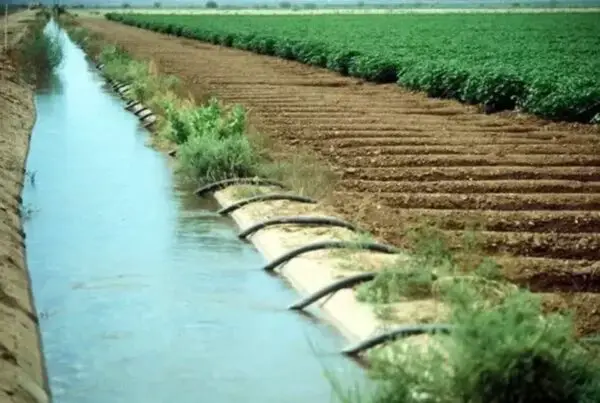Spillways are generally provided to allow the surplus discharge, during floods and other unexpected conditions, from the upstream side of the reservoir to the downstream. This is nothing but the overflow portion of the dam. It is also called by the name “surplussing work“.
According to Wikipedia,
A spillway is a structure used to provide the controlled release of flows from a dam or levee into a downstream area, typically being the river that was dammed. In the UK they may be known as overflow channels.
Purpose of Spillways for Dams
Spillways carry the flood or excess water that is not to be stored in the reservoir. This surplus water is generally drawn from top of the reservoir created by the dam. Spillway acts as a “safety valve” for the dam. Spillways are constantly provided for all storage and detention dams. It is predominantly important that spillways are provided with sufficient capacity.
Why Spillways are Important?
Spillways become very important in earth and rockfill dams. This is due to the fact that overtopping is a dangerous scenario in the above said dams. The main purpose of the spillway is to have the required capacity to discharge the major floods without causing damage to the dam.
How Spillway should be designed?
Spillways must be also designed in such a way that the reservoir level in the dam is kept below some predetermined maximum level. The amount of design flood discharge that is to be passed over the spillway is determined using the concepts of flood routing.
Spillway energy dissipators are required to operate safely and effectively throughout a wide range of discharges, for extended periods of time.
Different types of energy dissipators are:
a) Stilling Basin: Stilling basin is used to dissipate kinetic energy by the formation of a hydraulic jump. The hydraulic jump involves the principle of conservation of momentum. Depending on site foundation conditions, the stilling basin may be designed with a downstream sloping apron or horizontal apron. Baffles are frequently used to aid in formation of the hydraulic jump.
b) Roller Bucket: It consists of a circular arc bucket tangent to the spillway face terminating with an upward slope. It should be located an appropriate depth below tailwater and can be of solid and slotted bucket type.
c) Flip Bucket: It deflects the high velocity flow (jet) to downstream and transfers the energy to a location where impact, turbulence, and resulting erosion will not jeopardize safety of the dam or appurtenant structures.
The impact of the jet and the interaction of the turbulent flow at impact area dissipates major portion of energy. This impact will make scour hole even in rock. A preformed scour hole at the impact area (plunge pool) is also used for energy dissipation and minimize deposition in downstream channel.
Further reading & References:
- EM 1110-2-1603 (1990). “Hydraulic Design of Spillways”, U.S. Army Corps of Engineers.
- IS:10137 (1982). “Guidelines for section of Spillways and Energy Dissipators”, Bureau of Indian Standard.
- Peterka, A. J. (1984). “Hydraulic Design of Stilling Basins and Energy Dissipators”, Engineering Monograph No. 25, Bureau of Reclamation, United States Department of Interior.
Spillway Design for Small Dams
One of the most common types of spillways for small dams is the chute spillway, which consists of a smooth inclined channel that conveys water from behind the dam to the river below.
Chute spillways are relatively simple and economical to construct, and can handle large flows with high velocities. However, they also require careful design to ensure adequate energy dissipation, erosion protection, and debris passage.
Main design considerations for chute spillways
Inlet design
- The inlet is where water enters the spillway from the reservoir. The inlet should be designed to minimize head losses, turbulence, and air entrainment.
- The flow conditions at the inlet can be determined using an appropriate weir equation, such as the Francis formula or the Kindsvater-Carter equation.
- The inlet shape can be rectangular, trapezoidal, triangular, or circular, depending on the site geometry and aesthetics.
Chute design
- The chute is where water flows down the spillway slope. The chute should be designed to provide a stable and uniform flow regime, with minimal friction losses and shocks.
- The chute slope can be constant or variable, depending on the available space and drop height.
- The chute width can be constant or tapered, depending on the flow capacity and stability requirements.
- The chute surface can be smooth or roughened, depending on the energy dissipation and erosion protection needs.
Outlet design
- The outlet is where water leaves the spillway and rejoins the river. The outlet should be designed to dissipate excess energy, prevent scouring and undermining of the dam foundation and abutments, and facilitate debris removal.
- The outlet can have different types of terminal structures, such as stilling basins, flip buckets, ski jumps, or plunge pools.
- The outlet design should also consider the downstream water level fluctuations and backwater effects.
Spillway design for small dams is a complex and challenging task that requires a good understanding of hydrology, hydraulics, geotechnics, and structural engineering.
Conclusion
Spillway must be hydraulically and structurally adequate. It must be located in a position so not to cause any erosion or undermining of the downstream side of the dam. Spillways also should not cause any destruction to appurtenant structures.
Spillway design should also follow relevant guidelines and standards from reputable sources, such as the Bureau of Reclamation (USBR), the International Commission on Large Dams (ICOLD), or the Australian National Committee on Large Dams (ANCOLD).
Spillway design should also be verified by hydraulic model tests or numerical simulations whenever possible.







Looking forward to reading more. Great article. Really thank you! Much obliged. Dedie Alair Gisella
Good brief about spillway and their basic components.
Energy dissipators are one of the most important components of spillway structure and shall be designed properly. For big dams, spillway discharges very large amount of water from high heads. When the flow through spillway joins downstream dam in the river course, large potential energy converts into kinetic energy. This large energy, if not dissipated properly, will lead to erosion of toe of dam or river/channel course.